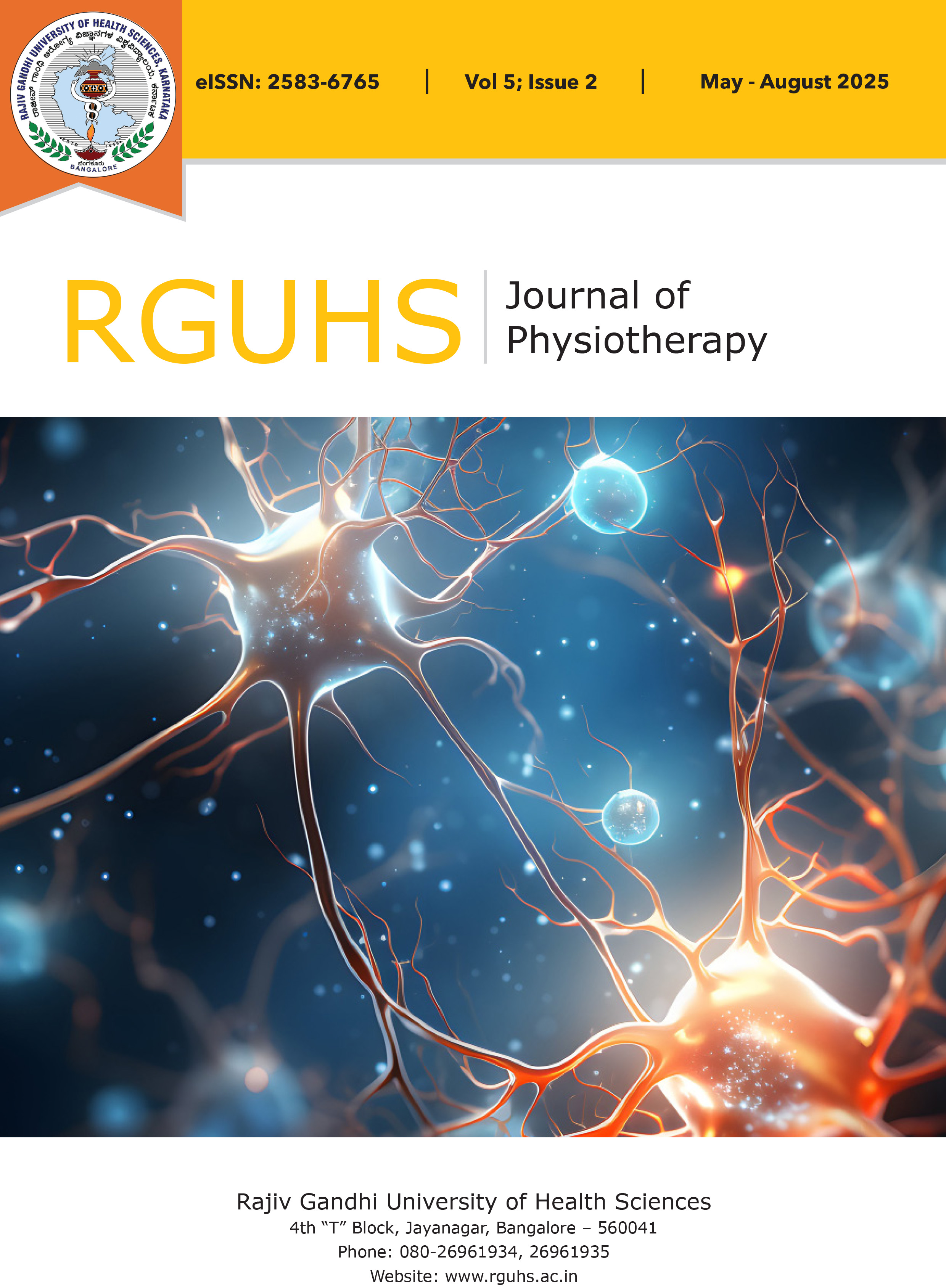
RGUHS Nat. J. Pub. Heal. Sci Vol No: 5 Issue No: 2 eISSN:
Dear Authors,
We invite you to watch this comprehensive video guide on the process of submitting your article online. This video will provide you with step-by-step instructions to ensure a smooth and successful submission.
Thank you for your attention and cooperation.
Prof. Pearlson K MPT (Aus)
Padmashree Diagnostics, Physiotherapy Department, Vijaynagar, Bangalore -560040. E-mail: rjpt2021@gmail.com

Abstract
None
Keywords
Downloads
-
1FullTextPDF
Article
Based on different researches, manual therapy has yielded useful improvement and avoidance or slowed need for surgical intervention for many patients. The therapy has significantly led to great reduction in pain, joint stiffness and improvement in patient’s functional status with long term and short term effects at a manageable cost. Further, introduction of manual therapy has remarkably aided in alleviating suffering, advancing well-being and improving care.
Manual therapy has been effective in the improvement of several impairments that determine the patient’s clinical picture with musculoskeletal dysfunctions, especially regarding range of motion and pain and with specific reference to the medium and short term, with high degree of satisfaction to the patients receiving the treatment. The therapy is highly effective in pain reduction and range of motion (ROM) improvement in patients who inadequately respond to treatment even with the right manipulation of distinctive target segments or show signs regardless of a palpatory analysis normalized with regard to the dysfunctions identified from the beginning. Moreover, several researches described the manual stimulus practiced through manual therapy tactics to have an ability to trigger a series of spinal, peripheral and supraspinal neurophysiological impact connected to modulation of pain. Additionally, other than pain perception reduction caused by tactile stimulation, empathic touch has been confirmed to be capable of acting on biomarkers concentration related to negative emotions, stress and other mechanisms connected to threat perception.
In case of musculoskeletal pain treatment, manual therapy significantly regulates peripheral tissue nociceptive afferences, irrespective of their specificity in structure. It is for this reason that many authors support the significance of manual therapy in the physical training and well-being fields aiming at attaining best physical functionality. Manual therapy is beneficial in all musculoskeletal impairment improvements that neurophysio logically and biomechanically contribute to the patient’s daily limitation and symptoms. These aspects play a significant role in high functionality of structures involved in motion that are clinically centered to enable high level performance helping them resume daily activities and adding value to their life. The literature supports patientoriented clinical exercises concentrated on the musculoskeletal impairment and pain mechanism that distinguish it based on responsiveness of clinical pictures.
Modification of symptoms in manual therapy plays a significant scholastic role by allowing the patients to understand that they are not possessors of unchangeable and incurable disorder, hence responding on psychosocial components that take part in significant prognostic role in the symptom chronicity. Clinical research, diagnostics, therapeutic practices and other scientific assessments covering different approaches of manual therapy have approved the substantiality of manual therapy.
Supporting File
References
None